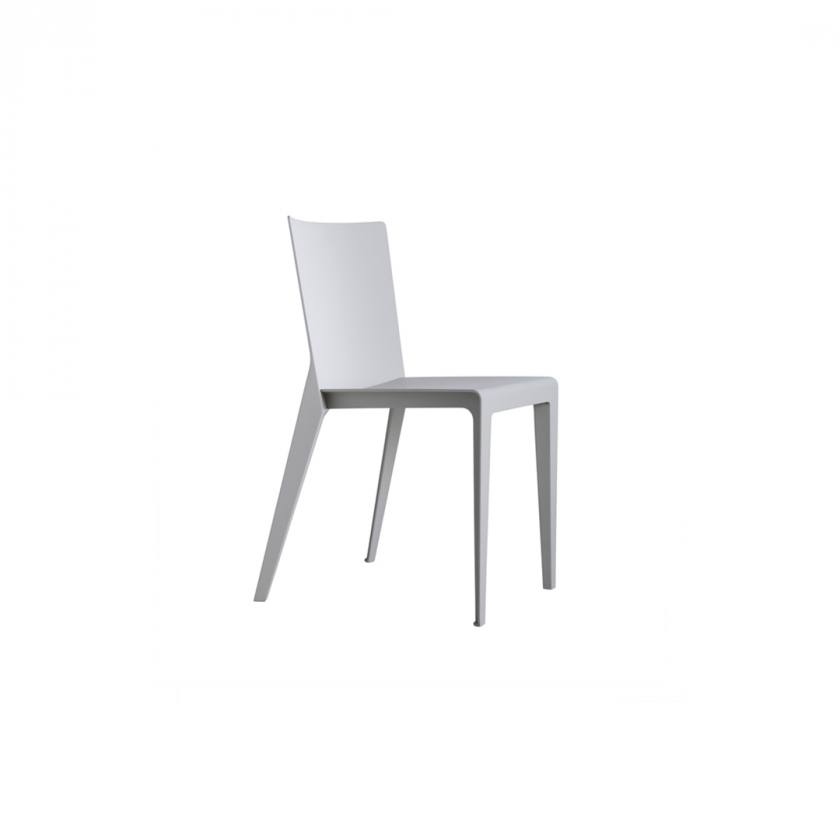Search for articles, topics or more
browse by topics

Search for articles, topics or more

Swiss design has a solid modern tradition. Any attempt to clarifly its characteristics could take into account the still useful definition of design given by a Swiss designer, first rector of the legendary school at Ulm, Max Bill: “Gute Form”, or “Good design”.
The definition of “Gute Form” can be summed up as the fusion in an object of technology and good performance (“fitness to purpose”, as the Englishman Henry Cole wrote a century before): a fusion which must become, without redundancy, content which is formal essence.

Hannes Wettstein was an intelligent follower of this tradition, creative, with a design which moved in many directions: furnishings, technical objects, architecture, interiors, visual communications.
Born in 1958, his design experience was vast, including the interiors of hotels such as the Grand Hyatt in Berlin or institutional headquarters like the Swiss Embassies in Teheran and Washington; he taught at the Zurich federal Polytechnic and from 1994 to 2001, at the Hochschule fur Gestaltung in Karlsruhe in Germany. During the latter half of the nineties he founded his own studio, an interdisciplinary laboratory which works on design and engineering processes, Zed. He set up collaborations with numerous businesses and towards the end of the century started working with the Molteni Group which develops various types of product. For example on the kitchen Nomis for Dada, mentioned in the ADI Index : a single block, island and wall versions, in which the space for preparing and cooking food faces the dining area, with bridge structures and projecting elements, and use of steel for professional level performance.
For Molteni he had already created one of the most interesting chairs of the last decade, Alfa, which clearly shows his elegant ability to create innovative solutions. Let’s look at the chair: two aspects stand out. The first is the attention to materials and their performance: this chair uses an avant-garde material, a resin-polyester composite reinforced with fibreglass.
This makes the juxtaposition of two elements possible, pairing only two pieces: one is the back which extends to become the back legs; the other is the seat which becomes the front legs. The resulting structure is light and geometrical. Wettstein’s designs almost always show technological precision and structural elegance.

There is a declared love for simple geometric solutions which in some cases become entertaining: take a look at Buddy, an hour glass shaped occasional table which is obtained by joining two cones in elegant leather and steel. The chair is an object which particularly lends itself to this type of work (think of the chair Dart, with its welcoming, ergonomic lines, in pressed aluminium) but Wettstein does not give up his passion in those furnishings which lend themselves less easily to this style, such as armchairs and sofas.
In 2004 he created Reversi, a design of decidedly geometric lines which rests the seating on a metal structure and which has a reclining back which can be raised or lowered, or altered to increase the seating area with a few simple movements, permitting a variety of uses. Wettstein’s ability to design apparently simple solutions with intelligence meant solutions to complex problems. Hannes Wettstein died two years ago at the age of fifty: he still had much to give as a designer, but he left behind him a design experience of immense quality.



The photographer Jeff Burton is known for the cinematic quality of his work: bathers by a hotel pool become a study in saturated colour; tanned bodies are seen at one remove, distorted by mirrored surfaces; a woman’s glance is glimpsed through a car’s rearview mirror.
Lunar New Year is the most important day in China’s lunisolar calendar.
The holidays are a time to eat, drink and make merry – the most convivial time of the year.
Thanks for your registration.